More than problem-solvers, retaining walls also have a sculptural quality that adds definition to the landscape, and they can be made from various materials to evoke different styles. Stacked timbers or mortared stone, for instance, can impart a rustic look, while poured concrete is sleekly modern. In this guide, we’ll cover the types of retaining wall materials commonly used, what they cost, and things to keep in mind when considering a new retaining wall.
Retaining Wall Parts
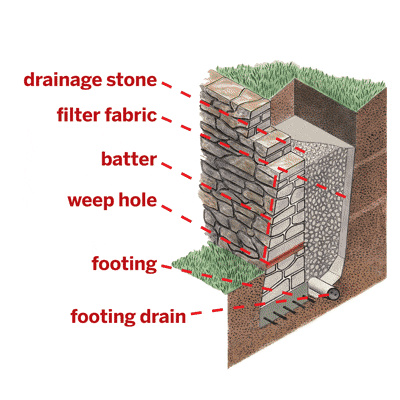
Understanding the components of a retaining wall is important for proper construction and long-term performance. While the specific parts may vary depending on the wall type, here are the basic elements of a mortared-stone wall:
- Batter: The backward lean into the earth, typically 1 inch for every 1 foot of wall height
- Drainage stone: Prevents water accumulation behind the wall
- Filter fabric: Stops soil from clogging the drainage stone
- Footing: Reinforced concrete that supports the wall
- Footing drain: Carries away excess water
- Weep hole: Spaced every 6 to 8 feet, allows water to drain through the wall base
These components work together to ensure the wall’s structural integrity and effective drainage.
4 Types of Retaining Wall Materials
While a retaining wall can conceivably be made out of almost any material, below are four of the most common materials used to construct these useful landscape additions.
1. Wood or Timbers
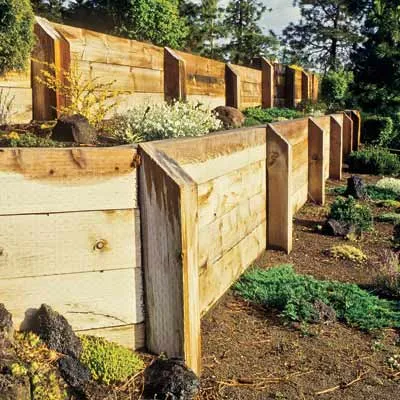
Wood and timber retaining walls are popular choices for DIY enthusiasts due to their affordability and ease of installation. Typically constructed using 6-by-6s, 6-by-8s, or 8-by-8s available at lumberyards and home centers, these walls are held together with screws, spikes, or rebar. They require only a basic crushed stone footing and T-shaped timber deadmen for anchoring.
When selecting wood for retaining walls, consider the following options:
- Pressure-treated pine and fir rated for ground contact can last up to 40 years
- Western red cedar or redwood have a lifespan of about 20 years
- Naturally rot-resistant woods, such as black locust or osage orange, can also be used for longer-lasting structures
Wooden retaining walls are flexible in design, allowing for curves and angles that blend seamlessly with the landscape.
Cost: Pressure-treated pine, $45 per 6-inch by 6-inch by 10-foot post, uninstalled*
*Unless otherwise noted, costs in this article reflect an average of prices that our team found from hardware stores like Lowes and Home Depot, and on Amazon.com.
2. Masonry
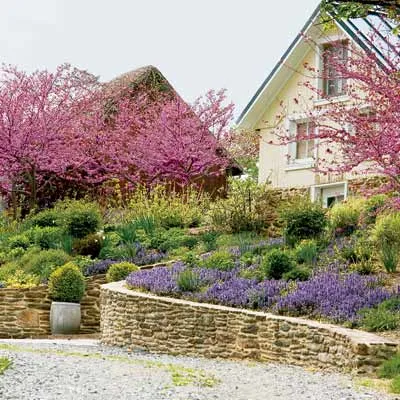
Masonry retaining walls, constructed from stone, brick, or concrete blocks, offer strength and longevity when built with proper drainage. While materials can be purchased from stone yards and home centers, professional installation by a mason is often recommended for the best results.
Key features of masonry retaining walls include:
- Mortared walls rest on a rebar-reinforced concrete footing set below the frost line
- Weep holes are necessary to relieve soil pressure
- Dry-stacked stone walls require only a crushed-stone footing
- Various styles and textures can be achieved, from rustic fieldstone to sleek brick patterns
The versatility in style and texture makes masonry walls a popular choice for those looking to enhance the aesthetic appeal of their property.
Cost: Fieldstone, $25 per square foot uninstalled
3. Poured Concrete
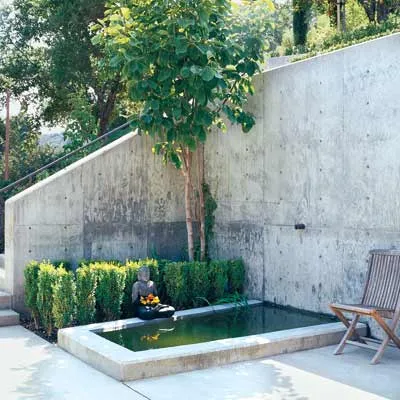
Poured concrete retaining walls are the strongest and most durable option available. They offer versatility in design, as the concrete can be stamped, stained, veneered, or carved to mimic other materials like mortared stone.
Important aspects of poured concrete retaining walls include:
- Professional design and installation are typically required
- Supported by a reinforced concrete footing
- Weep holes are necessary for proper drainage
- Unlike other wall types, poured concrete walls are not battered (leaned back) against the earth
- Can be customized with various finishes and textures
Poured concrete walls are ideal for modern or contemporary landscapes and require minimal maintenance once installed.
Cost: Ready-mix from a truck, $8 per square foot uninstalled
4. Interlocking Concrete Blocks
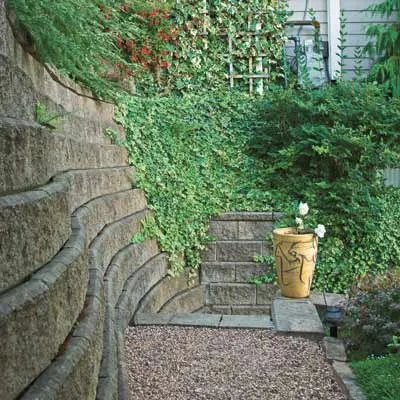
Interlocking concrete blocks are an excellent choice for DIY projects due to their lightweight design, flat sides, and simple assembly without mortar. These blocks are available at stone yards and home centers, offering a quarried look with rough faces and various color options.
Features of interlocking concrete block retaining walls include:
- Easy installation for DIY enthusiasts
- Rest on a crushed-stone footing
- Heavy-duty mesh anchors every other course against the ground
- Available in a range of colors and textures to suit different landscape styles
- Can be used for both straight and curved wall designs
These blocks also provide excellent stability and durability, making them suitable for various landscaping needs.
Cost: Versa-lok Weathered Mosaic (shown), $11.40 per square foot uninstalled
Retaining Wall Finishes
Enhancing the appearance of your retaining wall can be achieved through various finishes. Two popular options are staining and veneers, each offering unique benefits.
Stain
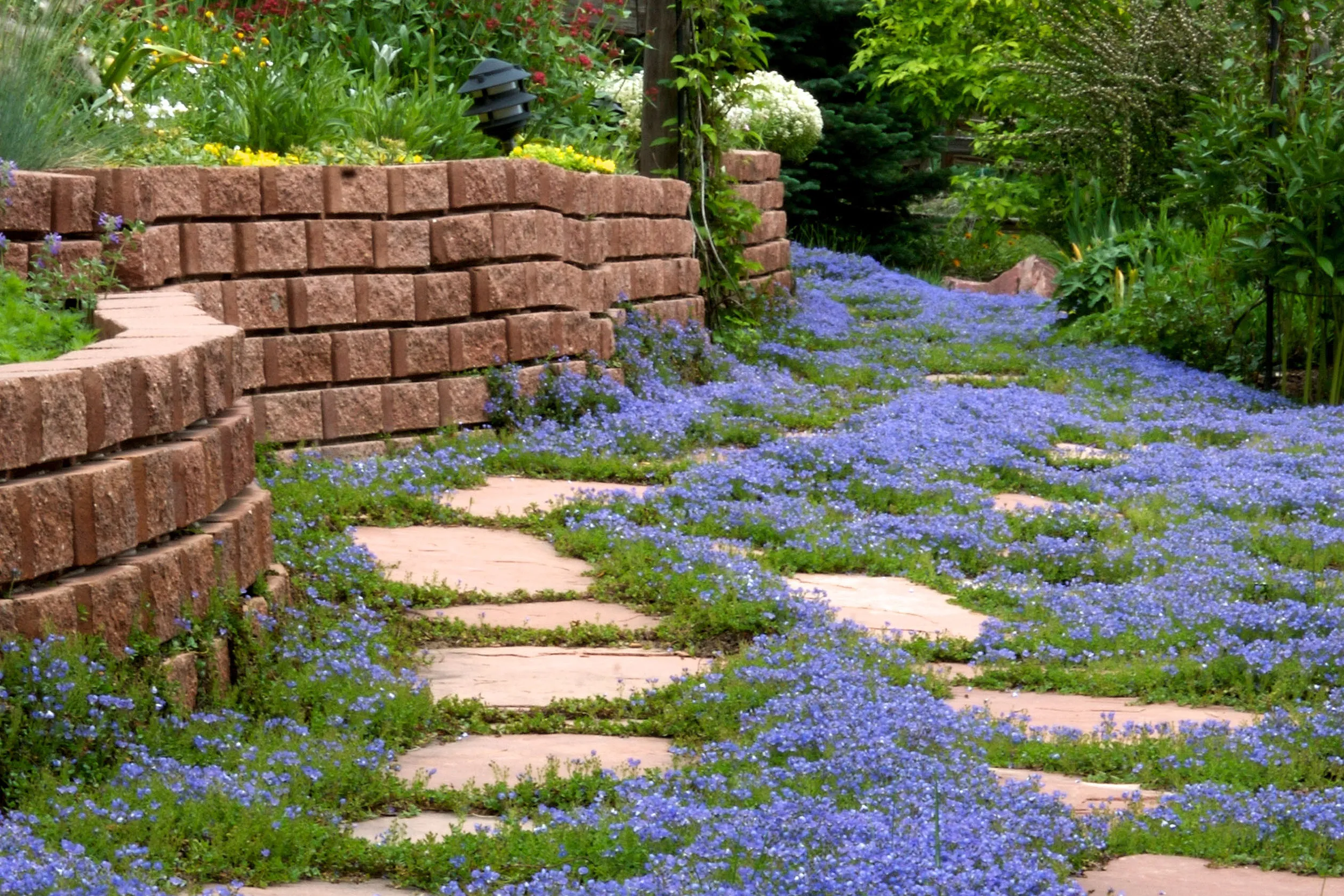
Staining is an excellent way to refresh the look of interlocking concrete blocks or other masonry materials. Water-based stains can be applied easily with a sprayer or roller directly onto a clean, unsealed surface. Benefits of staining include:
- Enhances the natural color of the material
- Offers protection against UV rays and weathering
- Provides a uniform appearance
- Can be reapplied as needed for maintenance
Stains come in a variety of shades, allowing homeowners to match the wall to their overall landscape design.
Similar to shown: Rust-Oleum concrete stain, 15 cents per square foot
Veneer
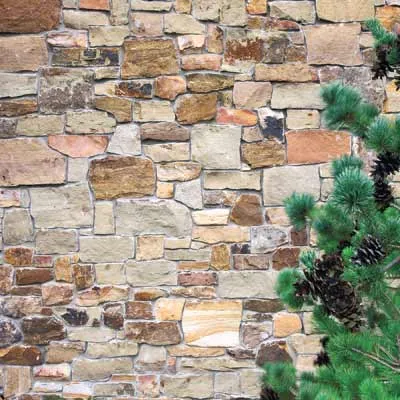
Veneers offer a way to transform the appearance of a plain retaining wall, giving it the look of traditional masonry at a fraction of the cost. Thin slices of brick, stone, or molded concrete can be adhered to the wall surface, creating a more aesthetically pleasing finish. Advantages of using veneers include:
- Lightweight and easy to install
- Provides additional protection to the wall structure
- Wide variety of styles and textures available
- Can be applied to existing walls for a fresh look
Veneers are perfect for anyone looking to enhance their landscape without the expense and effort of complete wall reconstruction.
Shown: Natural Stone Veneers, Tuscan Collection, starting at $16 per square foot uninstalled
How Long Should a Retaining Wall Last?
The longevity and effectiveness of a retaining wall depend largely on unseen elements, such as a sound footing buried in the ground and proper drainage to prevent water buildup behind the wall. With the proper installation and maintenance, different materials offer varying lifespans:
- Timber walls can last up to 40 years
- Masonry and concrete walls, when properly installed, have no set limit on their lifespan
Soil conditions, climate, and the quality of materials and construction techniques used affect a retaining wall’s durability. Regular inspections and timely repairs can extend the life of any retaining wall.
Can You DIY a Retaining Wall?
Timber and interlocking concrete-block walls are the most accessible options for DIYers. These materials are relatively easy to work with and don’t require specialized skills or equipment. However, it’s important to note that local building codes often mandate that walls higher than 4 feet tall be designed by an engineer and built by a professional.
When tackling a DIY retaining wall project, always keep the following in mind:
- Research local building codes and obtain necessary permits
- Carefully plan the wall’s layout and drainage system
- Invest in proper tools and safety equipment
- Consider enlisting help for heavy lifting and material handling
- Take your time and focus on proper installation techniques
For more complex projects or walls exceeding 4 feet in height, it’s best to consult with a professional landscaper or mason to ensure safety and longevity.
How Do You Maintain a Retaining Wall?
Proper maintenance is key to ensuring the longevity and effectiveness of your retaining wall. While these structures generally require minimal upkeep, regular attention can prevent major issues and extend their lifespan. Here are some essential maintenance tasks:
- Clear weep holes regularly to ensure proper drainage
- Inspect the wall for signs of shifting, bulging, or cracking
- Remove any vegetation growing on or near the wall
- Check for erosion around the base of the wall and address it as needed
- Clean the wall surface periodically to prevent staining and discoloration
Proper drainage management can help prevent structural issues caused by water buildup. If you notice any significant damage or structural issues, it’s best to consult a professional for repair advice and services.
Choosing the Right Retaining Wall Material for Your Project
If you’re not sure what retaining wall material to choose, these factors can help influence your decision:
- Aesthetic preferences and compatibility with existing landscape
- Budget constraints
- DIY capability versus the need for professional installation
- Local climate and environmental conditions
- Long-term maintenance requirements
- Wall height and soil pressure
By carefully evaluating these aspects, you can find a retaining wall material that not only serves its functional purpose but also enhances the overall beauty of your outdoor space. Balancing aesthetic desires with practical needs will achieve the best results.
